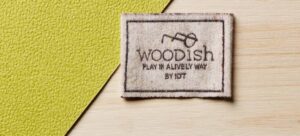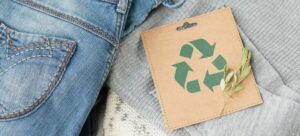Striking a balance between seasonal collections and your brand’s unique style is not always easy. At times, a collection that strays too far from the brand’s essence may fail to connect with your usual audience. On the other hand, when aiming to create something different for a new segment, how can you ensure it still reflects the identity that defines you?
Clothing labels are an extension of this ongoing pursuit of balance. They should complement the design of the collection while also aligning with what defines you as a brand — your identity and values. And while this is often quite clear when it comes to design, choosing the right material isn’t always so straightforward. So how can you ensure that, after the time and effort invested in each new collection, you don’t fall short on such a crucial detail as the clothing label material? Here are some tips based on our experience.
1. Consider the nature of your garment
The first step is to analyse the type of garment the label will be attached to. Labelling sportswear, where resistance to sweat and frequent washing is essential, is very different from labelling high-end garments, where every detail conveys a sense of exclusivity.
- For technical or sports garments, where durability and functionality are key, we usually recommend soft labels made from synthetic materials such as satin polyester or nylon. These can withstand frequent washing and are gentle on the skin.
- For luxury collections, organic cotton, linen, or blends with special finishes can add that premium touch you’re aiming for. In these cases, labels should not only be durable but also have a texture that reflects the exclusivity of the brand.
- For children’s clothing, softness and safety are paramount: hypoallergenic materials and the absence of harsh dyes are essential. Cotton or natural fibre labels are a safe and comfortable choice.
2. Think about the customer experience
The label is part of the garment’s direct contact with the customer. Who hasn’t cut off an uncomfortable label the moment they wear something new? Avoiding this is key, as it can influence how the product is perceived.
It’s essential that the material feels soft to the touch. Woven labels, for example, offer a high-end visual appeal, but it’s important they are well finished to avoid scratching or irritating the skin.
In addition, heat transfer printed labels are becoming increasingly popular—especially in sportswear or more affordable garments—as they are applied directly onto the fabric and go unnoticed when the garment is worn. This greatly enhances the customer experience, as they won’t feel the label at all.
> Check out our article on the differences between sewn-in and heat transfer labels.
3. Customise without losing your essence
As mentioned earlier, the label should remain consistent with the brand image while also adapting to the characteristics of each collection. While your brand defines the overall aesthetic (whether minimalist, luxurious, youthful, etc.), each collection comes with its own specific needs.
A useful strategy is to establish a modular design base for your labels, with fixed elements (such as logo, typography, or size) that remain constant, and customisable features (like colour, material type, or special finishes) that can be adapted to suit each collection.
Additionally, opting for versatile materials such as recycled polyester, organic cotton or technical blends can help make this adaptation easier. These materials allow for a variety of finishes, are suitable for different types of printing or embroidery, and can be tailored to both premium collections and more functional lines—optimising the process without compromising on style or quality.
4. Sustainability as an added value
In an industry where environmental awareness is steadily increasing, sustainability has become a key value for many brands. Choosing recycled or biodegradable materials for your labels is a tangible way to demonstrate your commitment. Here are some alternatives:
- Recycled polyester (rPET) is durable and has a finish very similar to traditional polyester, making it an ideal option for large-scale production without compromising on sustainability.
- Organic cotton, in addition to being eco-friendly, can offer a high-quality finish that suits a variety of collections. It’s a popular choice among brands that promote responsible and ethical fashion.
- Labels with certifications (such as OEKO-TEX, FSC, or Global Recycled Standard) not only ensure the sustainability of the materials, but also add value to the final product by showing customers that the garment has been made with quality and environmental responsibility in mind.
> Looking for more sustainable options? In this article, we explain which biodegradable materials are used in eco-friendly clothing labels.
5. Production and volume: Think about scalability
When managing large-scale production, you need materials that are not only suitable but also consistent and easily scalable. The ability to produce high volumes of labels without compromising on quality is a key factor in maintaining efficiency throughout the manufacturing process.
It’s essential to work with suppliers who can guarantee quality in every batch and offer materials that perform well across different production stages, such as garment assembly, ironing, and packaging. Nylon or polyester labels are ideal in this respect, as they offer excellent durability and resistance—even after numerous washes.
A label is not just a legal requirement; it’s an integral part of the garment’s design. Choosing the right material is an investment that communicates quality, consistency, and authenticity—all vital values for building customer loyalty.
At Indet, we help you find the ideal option that matches your brand’s essence, your collection’s identity, and your production demands. Because every detail matters.



